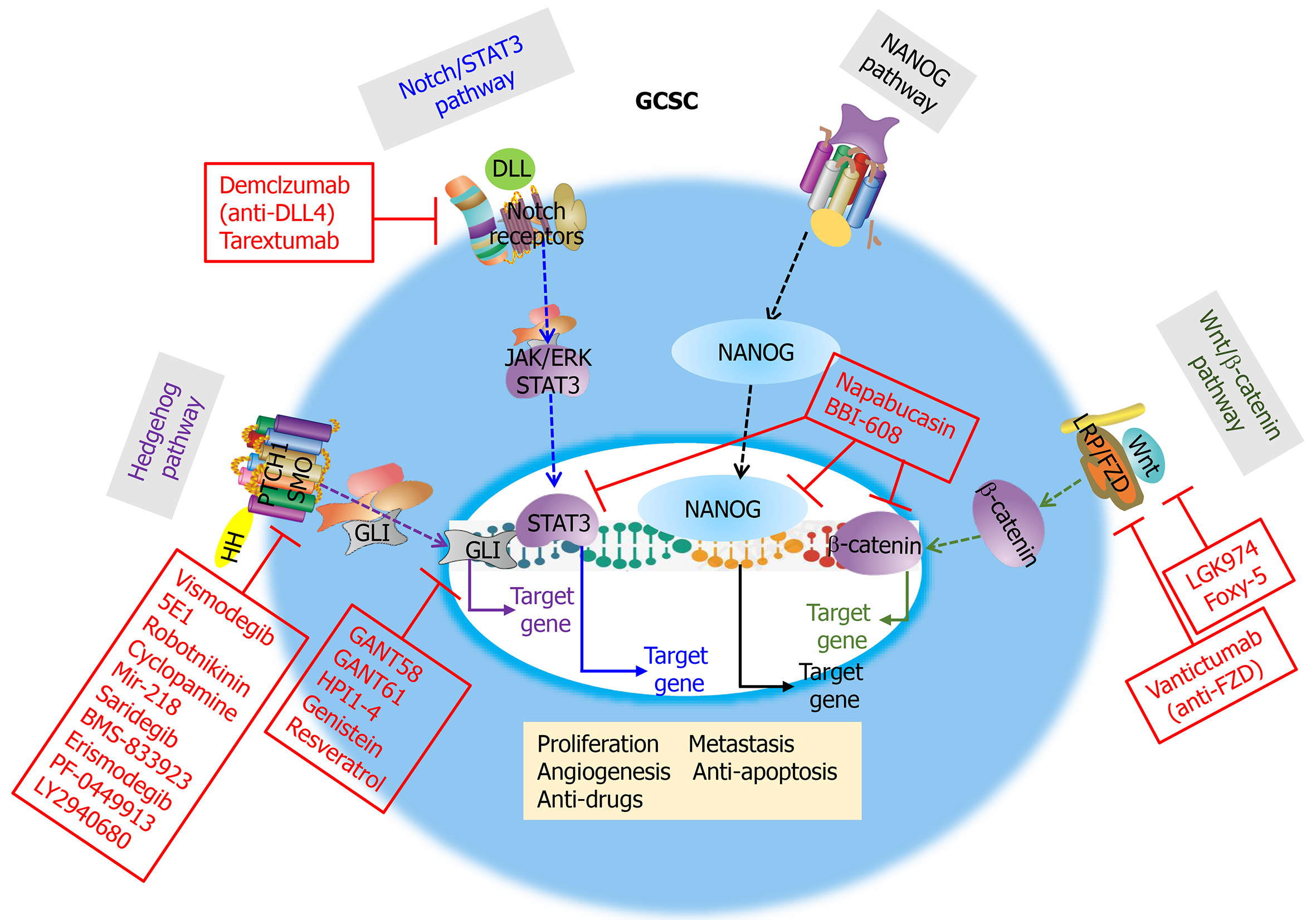Copyright
©©The Author(s) 2022.
World J Stem Cells. Jan 26, 2022; 14(1): 76-91
Published online Jan 26, 2022. doi: 10.4252/wjsc.v14.i1.76
Published online Jan 26, 2022. doi: 10.4252/wjsc.v14.i1.76
Figure 3 Four signal pathways contribute to stemness properties of cancer stem cells: Hedgehog, Notch/STAT3, NANOG, and Wnt/β-catenin pathways.
Hedgehog pathway: PTCH1-induced inhibition of SMO is reversed by HH binding with PTCH1, leading to the release of the complex of GLI from microtubules, with GLI protein entering the nucleus to transcriptionally activate downstream target genes. Notch/STAT3 pathway: DLL binding-induced Notch activation causes several kinase proteins activation, further converting STAT3 to a transcriptional activator to initiate downstream gene expression. NANOG pathway: Ligand binding-induced NANOG activation causes several kinase proteins activation, further converting STAT3 to a transcriptional activator to initiate downstream gene expression. Wnt/β-catenin pathway: Wnt binds to its receptor, Frizzled to activate LRP protein. The activated LRP protein enhances the phosphorylation of the kinase (a component of the cytoplasmic complex that promotes phosphorylation of β-catenin and its degradation), which inhibits the kinase, further causing the accumulation of free and unphosphorylated β-catenin in the cytoplasm that is then translocated to the nucleus. In the nucleus, β-catenin binds to other transcriptional factors to promote downstream target gene expression.
- Citation: Hsieh HL, Yu MC, Cheng LC, Yeh TS, Tsai MM. Molecular mechanism of therapeutic approaches for human gastric cancer stem cells. World J Stem Cells 2022; 14(1): 76-91
- URL: https://www.wjgnet.com/1948-0210/full/v14/i1/76.htm
- DOI: https://dx.doi.org/10.4252/wjsc.v14.i1.76









